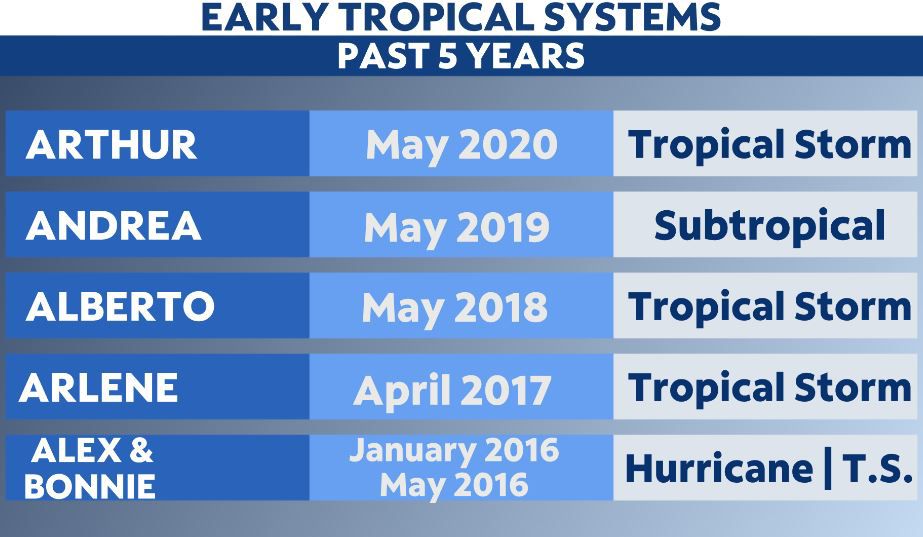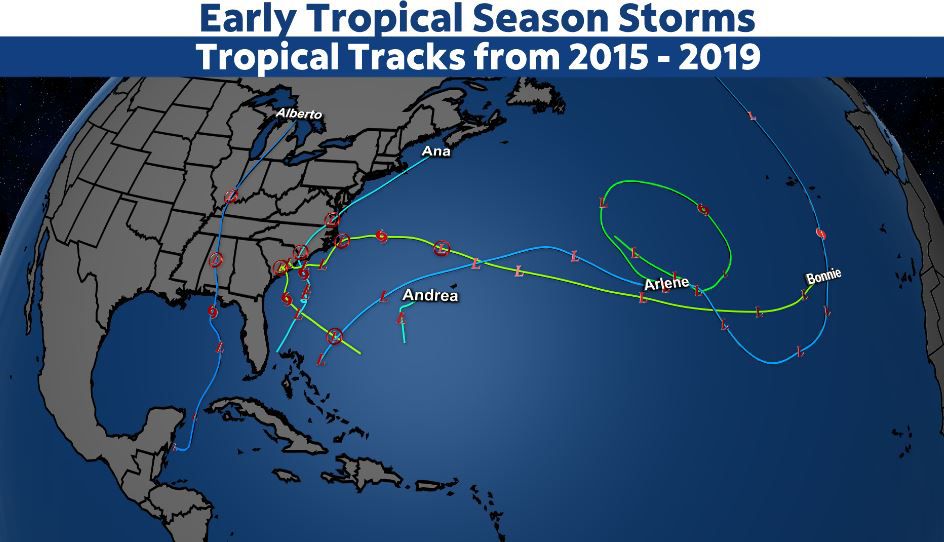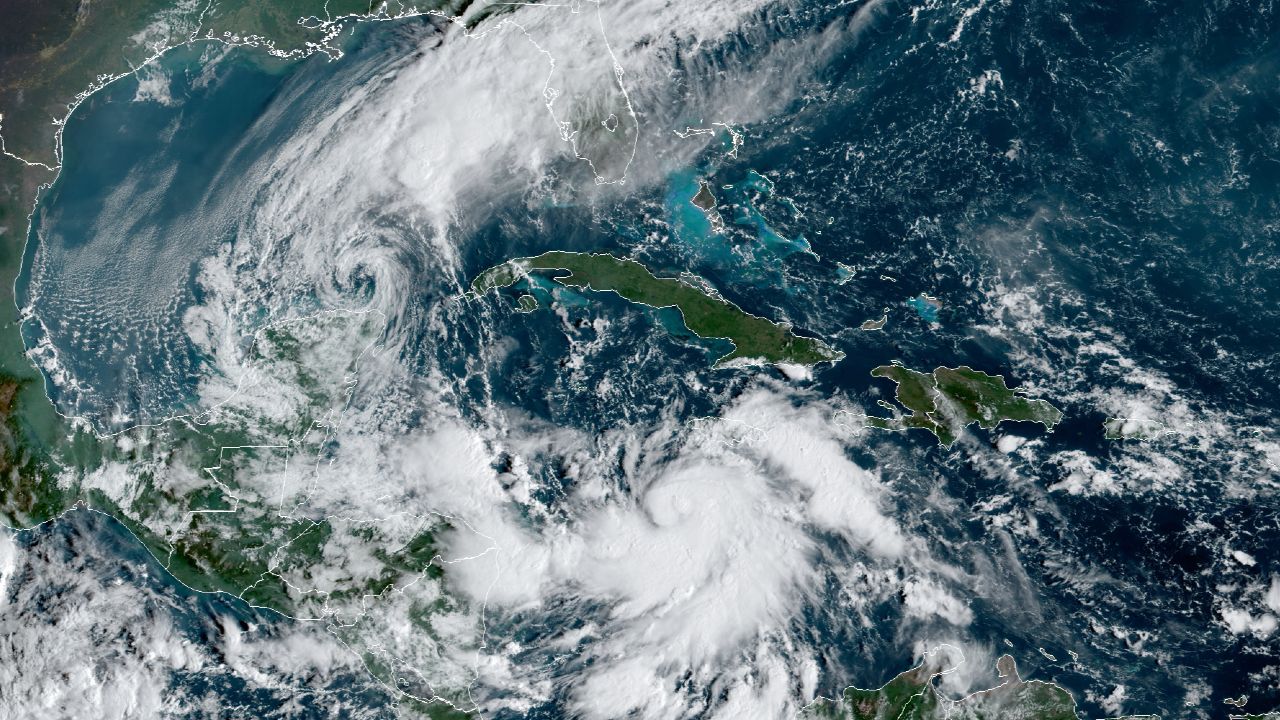Hurricane season is just a few short weeks away, but tropical systems can develop outside the traditional tropical calendar of June 1 through November 30.
In fact, 2020 was the sixth year in a storm developed and was named before June 1.
It was Arthur that developed on May 16, 2020. It rapidly developed into a tropical storm along the coast of North Carolina and quickly moved inland.
Andrea developed as a subtropical storm in May 2019. It was a short-lived system that stayed in the open waters of the Atlantic and it only lasted for a day.
A storm directly impacted parts of Florida in May 2018. This was Tropical Storm Alberto. Alberto made landfall in the Florida Panhandle on May 28.

In 2017, tropical storm Arlene formed in the East Central Atlantic in April. The system developed first into a subtropical depression before taking on tropical characteristics on April 19 well to the east of Bermuda in the Northern Atlantic Ocean.
At its peak, Arlene had winds of 50 mph making it a tropical storm. Arlene became only the second known tropical storm to develop in April outside of Ana in 2003 during the time of satellites.
In 2016, two systems developed way early.
This was the year Alex developed into a hurricane in the middle of January.
Alex became a hurricane near the Azores in the eastern Atlantic on January 14, 2016. Hurricane warnings and tropical storm warnings were issued for the islands of the Azores.
It had maximum sustained winds of 85 mph. Alex became the first hurricane to form in the Atlantic Basin in January since 1938 according to NOAA. Bonnie later developed in May as a tropical storm.
The most common area for a tropical or subtropical storm to develop in May is just east of our East Central Florida coastline.
Of course, this is just a friendly reminder that hurricane season is right around the corner and storms can pop up outside of the traditional months. So now is the time to prepare before a storm ever even begins to threaten the U.S. coastline.




